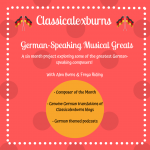Ludwig van Beethoven: Piano Sonata No.17
Context
Ludwig van Beethoven’s Piano Sonata No.17 was composed between 1801-02. Often referred to as ‘The Tempest’, the nickname is said to have originated from a personal conversation between Beethoven and Anton Schindler.
The Music
Movement I – Largo-Allegro
The opening bar and a half are marked ‘Largo’, which immediately sets the scene. This atmosphere is quickly changed in the second half of the second bar as Beethoven changes the tempo to ‘Allegro’. This is a theme throughout this movement as the movement alternates between slower, more peaceful sections, as well as more dramatic and stormy sections.
Big boisterous chords end the extensive exposition section and lead into the equally as long recitative. Fast and intricate passages lead the music back to the home key of D minor before quickly finishing.
Movement II – Adagio
The more dignified second movement is set in Bb major. The rising melodies hark back to the opening material from the previous movement. Lots more of the melodic content also mirrors phrases from the first movement, which subtly links these two sections together neatly.
Movement III – Allegretto
Back in the home key of D minor, the finale movement flows with emotion, quickly reaching the first climax. The extended development section focuses on the opening material. The recapitulation is introduced by a cadenza-like figure where the performer plays semiquavers and a bold rendition of the main theme. The ultimate climax is reached later on in the movement as the refrain continues. The tension is built and it explodes in glorious colour across the piano. A very loud descending chromatic scale brings the sonata to a rousing finish.
Final Thoughts
One of his more structurally experimental works for piano, Ludwig van Beethoven’s Piano Concerto No.17 is still a favourite in recital programmes around the world.
Ⓒ Alex Burns
Happy Reading!
You might also enjoy…Franz Liszt: Réminiscenes de Norma
*This blog is part of the German Speaking Musical Greats Project 2019/20

Recommended Recordings:


0 Comments